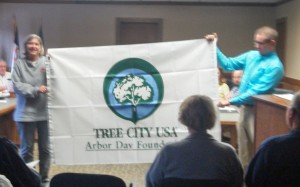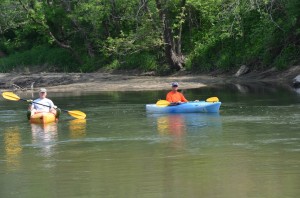CLICK HERE for the latest market quotes from the Iowa Agribusiness Network!
CLICK HERE for the latest market quotes from the Brownfield Ag News Network!
CLICK HERE for the latest market quotes from the Iowa Agribusiness Network!
CLICK HERE for the latest market quotes from the Brownfield Ag News Network!
Some climate change activists blame at least part of the planet’s weather problems on methane gas emissions from livestock. The Obama administration is ordering the U-S-D-A and the E-P-A to create a bio-gas roadmap to find ways to reduce those emissions. Iowa Senator Chuck Grassley says the roadmap is a questionable notion and he’s writing a letter to Gina McCarthy, the head of the E-P-A. “The roadmap is intended to reduce dairy sector greenhouse gas emissions through voluntary strategies by 25% by 2020,” Grassley says. “My questions for Administrator McCarthy center on the impact the plan has on the average U.S. dairy farms.”
Grassley, a Republican, says much of our country’s midsection was populated by some 600-million buffalo when pioneers first began settling in the region and there wasn’t a greenhouse gas problem back then. “You’ve gotta’ have a historical approach,” Grassley says. “Are you going to put diapers on cows? I don’t think so. I don’t think you’re going to shut down cows from producing methane gas. That’s the way God made ’em.” The plan calls on livestock producers to make changes that would reduce greenhouse gas emissions voluntarily, but Grassley remains skeptical of the motives.
“It’s hard to forget only a couple of years ago, this administration was trying to push Cap & Trade through Congress,” Grassley says. “It seems only right to be suspicious of the administration’s intentions. All you’ve got to do is look at fugitive dust as another example.” Dust can be stirred up during routine farming and that so-called “fugitive dust” was labeled by some as air pollution responsible for a host of negative impacts on human health, eroding the soil, strangling plants and causing reduced visibility that leads to traffic accidents.
(Radio Iowa)
The City of Atlantic has received yet another Tree City USA award. It’s the 19th consecutive year Atlantic has qualified for the award. A new flag, and a certificate designating the City as being tree friendly, was presented by Dolly Bergman and members of the local “Tree’s Forever” committee tasked with making sure the City qualifies for the award and does its part to keep Atlantic green.
She said one of the hardest requirements is keeping track of how much the City actually spends on its forestry, or tree-care budget, which must be at least $2 per capita. Parks and Rec Director Roger Herring helped with that. And, information provided by Trees Forever also helped the City meet the requirement. The City’s expenditures for trees and related services amounted to $14,822 in 2013.
The Tree City USA flag will be hung on the pole located in the Atlantic City Park, under a new American flag which replaces a storm-tattered American flag. Bergman says this year, the Tree’s Forever group will be working with Atlantic 4th graders on Friday, April 25th (The official Iowa “Arbor Day”), to plant a tree on the grounds of Schuler Elementary School. In addition, each of the 4th graders will receive a tiny Norway Spruce tree they can take home, plant and watch grow.
The U.S. Department of Agriculture has announced funding under the new Farm Bill to train and educate the next generation of farmers and ranchers. The Beginning Farmer and Rancher Development Program, or B-F-R-D-P, will help a new generation get into agriculture. Agriculture Deputy Secretary Krysta Harden says the USDA will help train and educate new farmers and ranchers with $100 million from the new Farm Bill.
“The average age of our farmers is 58 years old. So, we need the bench,” Harden says. “We need to get folks coming into agriculture who either grew up on a farm or are thinking about coming back, but also folks who don’t know much about agriculture, but who have that drive, that passion, who want to get into farming or ranching.” Part of BFRDP’s funding will help limited-resource and socially disadvantaged beginning farmers and ranchers and military veterans get started.
“We’re targeting these groups of folks to give them the very special tools they may need, the uniqueness of their questions or concerns that they may have and getting into agriculture, so it’s really a target of funds to these areas,” Harden says. Earlier this year, the USDA reported there were 88,631 farms in Iowa in 2012. That represented a 6.6 percent drop from 2007. Iowa still ranks third among the states in the total number of farms – behind only Texas and Missouri. The average age for an Iowa farmer is about 63.
(Radio Iowa)
PIERRE, S.D. (AP) – There are varying degrees of drought conditions in the Plains region, but a National Weather Service hydrologist says predicted above-normal rain this spring might ease some of the problem. Mike Gillispie in Sioux Falls expects improvement in parts of Iowa, Minnesota and South Dakota. Some people in the agriculture industry and with municipal water supplies are still wary.
Nathan Fields with the National Corn Growers Association says that during the 2012 drought, he learned how quickly it can set in and affect crop production. Parts of eastern South Dakota are abnormally dry. The stretch from southern Minnesota and Iowa through Nebraska is facing moderate drought. Conditions worsen toward the south, as parts of Texas and Oklahoma are in the middle of an ongoing drought. There’s no drought in North Dakota.
The number of deer donated to a Department of Natural Resources program that uses the meat to feed the hungry in the state dropped by 15-percent this year. Hunters still donated 39-hundred deer to the “Help Us Stop Hunger” or HUSH program. The D-N-R’s Jim Coffey oversees HUSH and says hunters have been very generous over the last decade. “The Hush program has been very popular with our hunters, they see direct benefit back to local communities and helping needy families,” Coffey says.
He says the drop in deer donations compared to last year amounts to around 30-tons of ground venison. “Most likely the donations are down because the deer population is down,” Coffey says, “also beef prices are up, so it’s more like that people keeping more for themselves.” Coffey says the D-N-R’s efforts to reduce the deer population have worked. “We’ve been more liberal with the harvest of the doe deer. And obviously, the does are the ones that produce the next year’s offspring. So, when we’re harvesting additional does, that means were producing less deer into the population next year.”
The Food Bank of Iowa coordinates distribution of the deer meat and is replacing the loss of venison with other protein, like canned chicken, or even peanut butter. Hunters in the program have donated some 60-thousand deer in 10 years — which is the equivalent of nearly 11 million meals (10.8 million).
(Radio Iowa)
Burn Bans which had been in-place in Fremont and Pottawattamie Counties were lifted Monday, due to the recent wet conditions. The Fremont County ban on open burning had been in effect since March 18th, while the ban in Pottawattamie County was in-place since March 19th.
Burn bans remain in effect for Mills, Montgomery and Page Counties, until further notice.
DES MOINES, Iowa (AP) – Iowa Gov. Terry Branstad has awarded grants to two fueling sites in an effort to expand access higher blends of ethanol and biodiesel. The Oak Street Station in Inwood and Farmers Cooperative in Mount Ayr will each receive $125,000 as part of the Fueling Our Future initiative.
Farmers Cooperative will construct a new fueling site to provide different ethanol and biodiesel blends. It also will receive $100,000 through the Iowa Renewable Fuels Infrastructure program.
The Oak Street Station will build a new site offering five renewable fuel dispensers.
Branstad says in a statement that supporting these projects will help grow the local economy as well.
DEWITT, Iowa – With the coming start of the growing season in Iowa, a group of volunteer “drift catchers” is preparing to spread out across the state to monitor the air for floating pesticides. Among the group is Greg King, who grows vegetables, fruits and flowers in rural DeWitt, and had some problems with agricultural drift last spring. “It was later found out to be drift of glyphosate or Round-Up,” he said. “It affected one of our crops, which was tomatoes, and they’re extremely sensitive. It also affected some of the trees in our yard, curling up the leaves and in one case, one of the plants died.”
According to Practical Farmers of Iowa, there were nearly 200 reported instances of pesticide drift in the state last year, although many go unseen and unreported. King said one way rural residents and horticulture farmers can minimize the potential for pesticide drift damage is to get on the sensitive crops registry, a directory compiled by the Iowa Department of Agriculture and Land Stewardship for use by pesticide applicators.
“And it gives the various sprayers in the area an opportunity to look up your particular address in the area where they’re going to be spraying and a chance to realize that perhaps they need to be more diligent,” King said. Beehives can also be registered with the state.
King said that when pesticide applicators know they’re working in a sensitive area, they do have options to minimize drift.
“They can slow the machines down, slow the pumps down, drop the booms. There are several things that can work in conjunction with what I might do on my side of the fence,” he said. “And in my case with a high tunnel, I would drop the sides down, close it off, turn the ventilation fans off, and that type of thing.” A high tunnel is a sort of greenhouse made of plastic sheeting supported by frames.
King urged those who want to get on the registry to act before May 1, since the start of the month is frequently when applicators will review the sensitive-crops list.
Information on the sensitive-crop registry is at IowaAgriculture.gov. Details on the drift-catcher program are at PANNA.org.
Water safety experts are warning canoers, kayakers and boaters that Iowa’s bodies of water have been slow to warm. Certified paddling instructor Darrin Siefken, of Waverly, says even though the air temperature feels spring-like, the water can be ice cold and dangerous. “Our rivers and lakes here in northeast Iowa just thawed out within the last week. So, most of those water temperatures are only about 50 degrees…when the air temperature is in the 60s or so.”
Certified paddling instructor Darrin Siefken, of Waverly, says even though the air temperature feels spring-like, the water can be ice cold and dangerous. “Our rivers and lakes here in northeast Iowa just thawed out within the last week. So, most of those water temperatures are only about 50 degrees…when the air temperature is in the 60s or so.”
“It’s a good opportunity to dress properly and bring along another set of clothes in a dry bag just in case you would tip over,” Siefken said. Kayaking is becoming increasingly popular in Iowa. Charles City has a world-class course built in 2011 and similar venues are under construction in Manchester and Elkader. Siefken instructs his students, before they hit the water, to let others know where they’re going and when they expect to return.
“And then make sure you follow up and tell them when you get back…it helps with today’s technology that we can get a hold of people pretty easy,” Siefken said. He warns that many rivers in Iowa are full of debris that has washed downstream and could cause navigation problems.
(Radio Iowa)